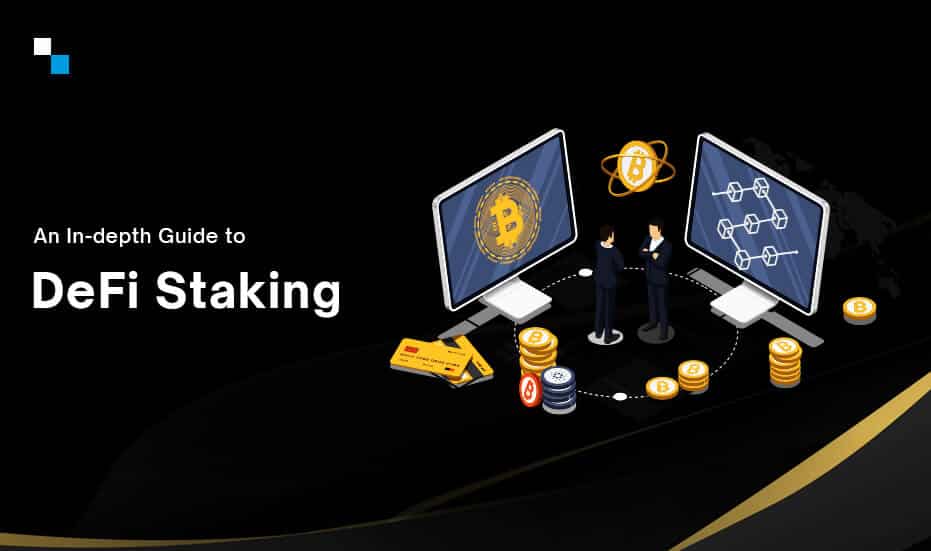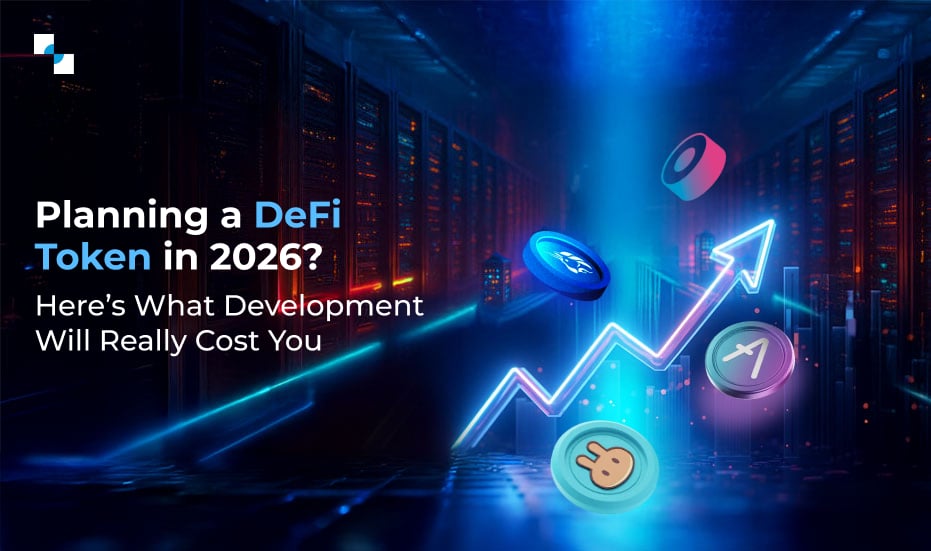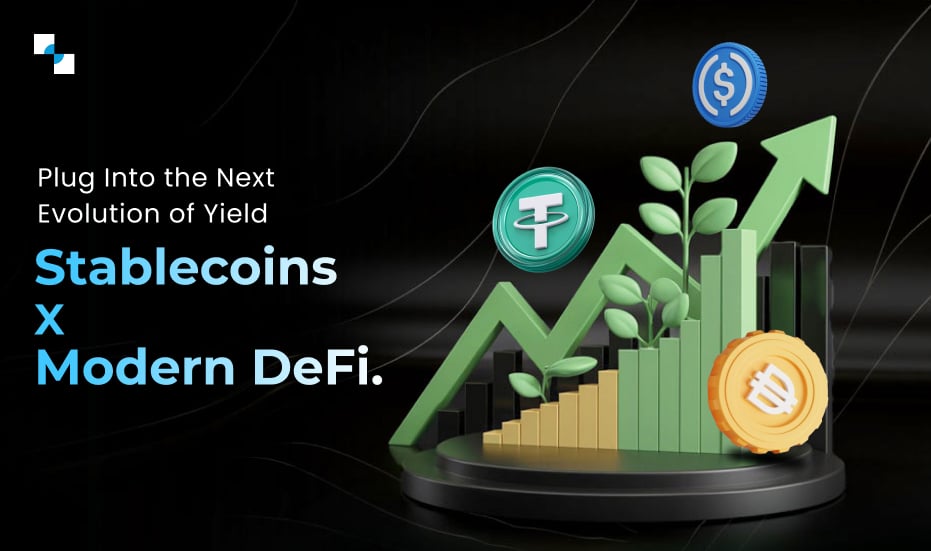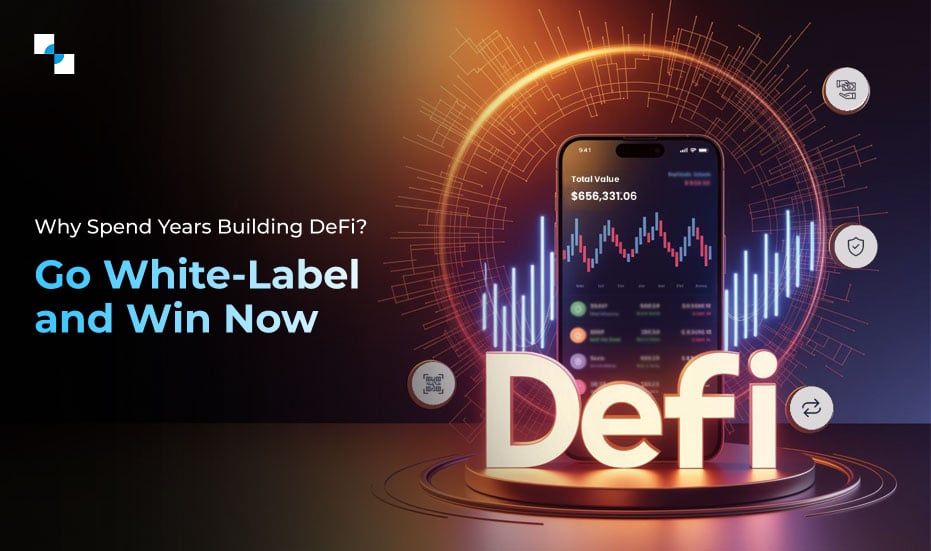The decentralized finance (DeFi) landscape has witnessed explosive growth in recent years, and one of the key pillars driving this revolution is DeFi staking. Staking is not only a way to earn rewards but also a fundamental mechanism that contributes to the security and operation of various blockchain networks. In this comprehensive guide, we will explore DeFi staking development, its various types, and the myriad use cases that are transforming the financial industry.
Understanding DeFi Staking
Staking in the DeFi world involves the process of locking up digital assets in a blockchain protocol to support network operations and, in return, receiving rewards or incentives. On the DeFi staking platform, stakers essentially act as validators or node operators, helping secure and validate transactions on the network. Staking serves a dual purpose: strengthening the network’s security and providing stakers with a source of passive income.
Types of DeFi Staking
Proof of Stake (PoS)
PoS is one of the most common staking mechanisms used in the best DeFi staking platforms. Validators are chosen to create new blocks and validate transactions based on the number of tokens they hold and are willing to lock as collateral.
Leading examples: Ethereum 2.0, Polkadot, and Cardano.
Delegated Proof of Stake (DPoS)
DPoS is an extension of PoS where token holders vote for a small number of delegates who perform network validation.
Leading examples: EOS, Tron, and Binance Smart Chain.
Liquid Staking
Liquid staking tokens represent staked assets and can be traded or used in other DeFi protocols, providing liquidity while still earning staking rewards. Liquid staking protocols issue users a liquid staking token (LST) in exchange for their staked assets. LSTs can then be used to interact with other DeFi protocols, such as decentralized exchanges (DEXes) and lending platforms.
Leading examples: Staked ETH, and RBTC.
Yield Farming and Liquidity Provision
Beyond network security, users can stake assets in liquidity pools or yield farming protocols to earn rewards in the form of native tokens.
Leading examples: Uniswap, SushiSwap, and Compound.
Masternodes
Masternodes are full nodes in a blockchain network that perform specific tasks and require a significant collateral stake.
Leading examples: Dash and Zcoin.
Use Cases of DeFi Staking
Earning Passive Income
The most common use case for DeFi staking is to earn passive income. Stakers lock up their tokens in a blockchain network and, in return, receive staking rewards, which are typically distributed in the form of additional tokens. It provides the best crypto staking rewards, and the passive income can serve as an alternative to traditional savings accounts or investment vehicles.
Network Security
DeFi staking plays a vital role in securing many blockchain networks. In Proof of Stake (PoS) and Delegated Proof of Stake (DPoS) systems, validators or block producers are chosen based on their staked tokens. The more tokens they stake, the higher their chances of being selected to create new blocks or validate transactions. By participating in staking, users contribute to the network’s security.
Governance Participation
Some blockchain networks and yield staking crypto platforms grant stakers the right to participate in governance decisions. Stakers can vote on protocol upgrades, changes, and proposals, giving them influence over the network’s development and direction.
Liquidity Provision
Liquidity providers in decentralized exchanges (DEXs) and automated market makers (AMMs) can stake their liquidity provider (LP) tokens to earn rewards. These LP tokens represent ownership in a liquidity pool and can be staked to increase returns.
Token Bonding
In some blockchain networks and crypto yield farming platforms token bonding through staking is used as collateral for decentralized applications (dApps) and services. Staked tokens act as a guarantee for the proper execution of smart contracts or services, ensuring trust and security.
Yield Farming and Liquidity Mining
Automated yield farming and liquidity mining are DeFi strategies that involve staking tokens to provide liquidity to various DeFi protocols, such as lending platforms or decentralized exchanges. In return, users receive rewards in the form of additional tokens, often with high APYs.
Syrup
The term “syrup” is often used in the context of PancakeSwap, a decentralized exchange built on the Binance Smart Chain (BSC). Users can stake their CAKE tokens on PancakeSwap and other sites by “staking CAKE in the syrup pool.” Users can obtain extra tokens as prizes by staking CAKE tokens in the syrup pool. Usually, these awards come in the form of additional tokens or new projects’ tokens that have joined the platform.
Participation in Early Projects
Many DeFi projects and new blockchain networks require early participants to stake tokens as part of their contribution to the network’s launch. These participants are often rewarded with tokens from the project’s initial supply or revenue streams.
Reducing Token Supply
Some DeFi projects implement staking mechanisms to reduce token supply. By DeFi staking and locking up tokens, participants effectively decrease the circulating supply, potentially leading to increased token scarcity and value.
Lending/Borrowing
To lend or borrow using DeFi staking, users typically need to deposit their assets into a smart contract. The smart contract will then issue the user a token that represents their stake in the pool. This token can then be used to borrow assets from the pool or to lend assets to the pool and earn interest. There are a number of benefits to lending and borrowing using DeFi staking, like higher interest rates, more flexibility, and less censorship.
Enhancing Price Stability
Staking can encourage long-term holding of tokens, reducing sell pressure and contributing to price stability. This is particularly beneficial for the stability of tokens used as a medium of exchange within DeFi ecosystems.
Savings and Retirement Planning
DeFi staking development can serve as a vehicle for savings and retirement planning. Users can stake their assets with confidence in earning passive income, potentially creating a long-term financial strategy.
Community Engagement
Defi staking platform development services often incentivize community engagement through staking. Community members who stake tokens may gain access to exclusive benefits, such as early access to new features or additional rewards.
Asset Diversification
Staking allows cryptocurrency holders to diversify their portfolios by participating in multiple staking opportunities across different blockchain networks, thereby spreading risk and maximizing potential returns.
NFT Staking
NFT staking involves the process of locking or staking NFTs or ERC20 tokens on a platform for a specified period. Stakers of ERC20 tokens will receive NFT, whereas holders of NFTs might receive rewards in the form of additional NFTs, cryptocurrency tokens, or other assets. If you’ve been holding on to an NFT for a while and don’t plan on selling it anytime soon, you can lock your NFT on an NFT staking platform and get the benefits without giving up your ownership.

How Does DeFi Staking Work?
To stake cryptocurrency, users typically need to:
- Choose a DeFi staking platform: There are many different DeFi staking platforms available, so it is important to do your research and choose a platform that is reputable and secure.
- Deposit your cryptocurrency assets into the staking platform: The amount of cryptocurrency assets that you need to deposit will vary depending on the staking platform and the cryptocurrency that you are staking.
- Choose a staking pool: Each staking platform will have a variety of staking pools to choose from. Each staking pool will have different reward rates and lock-up periods.
- Stake your cryptocurrency assets: Once you have chosen a staking pool, you can stake your cryptocurrency assets. The staking platform will then lock up your assets for the specified lock-up period.
- Earn rewards: Once you have staked your cryptocurrency assets, you will begin to earn rewards. The rewards will be paid out to you on a regular basis, typically daily or weekly.
After the lock-up period has elapsed, you can unstake your cryptocurrency assets and withdraw them from the staking platform.
Benefits of DeFi Staking
Here are the key benefits of DeFi staking in detail:
Passive Income
One of the most significant advantages of DeFi staking is the ability to earn a passive income. Stakers receive rewards for participating in the network’s consensus mechanism without the need for active trading or mining. This makes it an attractive option for investors looking to grow their crypto holdings.
Attractive Returns
DeFi staking often offers competitive returns compared to traditional investment options like savings accounts or bonds. Staking rewards are typically presented as an Annual Percentage Yield (APY), which can be significantly higher than the interest rates offered by traditional banks.
Diversification
Staking allows cryptocurrency holders to diversify their portfolios by earning rewards from multiple blockchain networks. By staking different tokens across various networks, users can benefit from multiple income streams and mitigate risk.
Network Security
Stakers play a crucial role in securing blockchain networks. In Proof of Stake (PoS) and Delegated Proof of Stake (DPoS) systems, validators are responsible for validating transactions and maintaining the network’s integrity. Stakers’ collateral acts as a security deposit, incentivizing them to follow the rules and act in the network’s best interest.
Influence in Governance
In some blockchain networks, stakers have the opportunity to participate in governance decisions. They can vote on protocol upgrades, changes, and proposals, giving them a say in the network’s development and direction.
Reduced Energy Consumption
DeFi staking development is often considered more environmentally friendly than traditional Proof of Work (PoW) mining, which consumes substantial amounts of electricity. Staking typically requires less energy, making it a sustainable option for blockchain participation.
Liquidity and Flexibility
Many DeFi staking protocols offer flexibility in terms of lock-up periods and withdrawal options. Users can choose between short-term and long-term staking, providing liquidity when needed.
Protection Against Inflation
Staking rewards can help offset the effects of inflation by allowing users to earn new tokens or coins at a rate that often outpaces token issuance. This can help maintain or increase the purchasing power of staked assets.
Accessibility
DeFi staking is generally accessible to a wide range of users, including those with relatively small amounts of cryptocurrency. This inclusivity allows more people to participate in the blockchain ecosystem and earn rewards.
Transparency and Security
DeFi staking is executed on blockchain networks, known for their transparency and security features. Users can verify their staking activity on the blockchain, reducing the risk of fraud or mismanagement.
Long-Term Holding Incentives
Staking encourages long-term holding of tokens, which can contribute to price stability and reduce speculative trading. This can be beneficial for the overall health of the ecosystem.
Early Participation in Projects
DeFi staking often plays a pivotal role in the launch of new blockchain projects and tokens. Early participants can stake their assets to support the network’s initial operations and potentially get benefit from the project’s success.
Lower Barriers to Entry
DeFi staking is accessible to anyone with a crypto wallet and an internet connection. Unlike traditional Proof of Work (PoW) mining, DeFi staking does not require any specialized hardware or software.
Portfolio Diversification
DeFi staking can be a great way to diversify your investment portfolio. By staking a variety of different tokens, you can reduce your risk exposure and potentially increase your overall returns.
Reward Distribution in Staking
Reward distribution in staking refers to the process by which participants in a blockchain network, often referred to as validators or stakers, receive rewards for their role in securing and maintaining the network’s operations. The distribution of rewards can vary depending on the specific staking mechanism and blockchain network, but the general principles remain consistent. Here’s an overview of how reward distribution in staking typically works:
Block Rewards: In Proof of Stake (PoS) and similar consensus mechanisms, validators are responsible for creating new blocks and validating transactions. As a reward for their efforts, they receive a portion of the newly created tokens (block rewards) as well as transaction fees paid by users of the network. These block rewards are distributed to validators according to their stake in the network.
Stake-Based Distribution: Reward distribution is often proportional to the amount of cryptocurrency that a validator has staked or bonded as collateral. Validators with larger stakes receive a larger share of the rewards, which incentivizes participants to have a significant stake in the network and contribute to its security.
Delegation Rewards: In some PoS systems, participants who do not want to run their own validator nodes can delegate their tokens to validators. Validators then share a portion of their rewards with these delegators as an incentive for them to participate. The rewards distributed to delegators are typically a percentage of the validator’s earnings.
Voting or Governance Rewards: In addition to block rewards, some PoS networks offer rewards for participating in governance decisions or voting on protocol upgrades. These rewards can encourage active participation in network governance.
Validator Performance: Validators’ performance and behavior can also affect their rewards. Networks may penalize validators for misbehavior or downtime by slashing a portion of their staked tokens. Conversely, validators who consistently follow the rules and maintain uptime may receive higher rewards.
Distribution Frequency: The frequency at which rewards are distributed can vary. Some networks distribute rewards with every new block, while others do so on a daily, weekly, or even longer time frame. The distribution frequency can affect how quickly participants can access their staking rewards.
Compounding Rewards: Many stakers choose to re-stake their earned rewards, compounding their staking rewards over time. This can accelerate the growth of their staked assets and increase their overall rewards.
Smart Contract-Based Rewards: In some DeFi protocols, reward distribution is facilitated through smart contracts. Users stake their tokens in a contract, and the rewards are automatically calculated and distributed based on the contract’s rules.
Inflationary Rewards: Some networks use inflation as a source of rewards. New tokens are created and distributed as rewards to validators and stakers. This can help maintain network security and incentivize participation.
Refraction Rewards: Refraction staking rewards are a type of staking reward that is unique to the OlympusDAO protocol. OlympusDAO is a decentralized finance (DeFi) protocol that uses a unique bonding mechanism to maintain the price of its native token, OHM. Refraction staking rewards are paid to stakers in the form of newly issued OHM tokens. The amount of refraction staking rewards that a staker receives is proportional to the amount of OHM tokens that they have staked and the current rebasing rate.
Rebase Rewards: Rebase tokens are a type of cryptocurrency that automatically adjusts their supply to maintain a target price. This is done by distributing new tokens to holders, or “rebasing” the supply. Staking rebase tokens allow holders to earn rewards in the form of new tokens.
Rebase rewards are different from traditional staking rewards in that they are not paid out in a separate token. Instead, the rewards are added to the holder’s existing balance of tokens. This means that the value of the holder’s stake increases over time, even if the price of the token remains the same.
Get Obligation Free Quote
[widget id=”custom_html-3″]
Final Words
Decentralized Finance (DeFi) staking is a popular way for cryptocurrency holders to participate in blockchain networks, support their operations, and earn rewards. Thinking of venturing into Defi Staking Platform Development? Rely on Antier, the experienced and expert DeFi staking platform development company well-versed in the domain.







